| |
|
|

Color Analysis
Each artist seems to have preferred colors that show up most often in their paintings as well as distinct ways in which they incorporate colors into their paintings. Rembrandt tends to use much darker colors, Monet prefers softer colors that blend together, and Picasso incorporates planes of color into his art of which tend to be fairly bold and bright.
Color Spectrum Decomposition:
The purpose of this tool is to evaluate pictures, pixel by pixel, and divide the pixels' colors up into broader categories of color based on their hue (wavelength). First the colors are converted in MATLAB from RGB (Red, Green, Blue) format to HSV format (Hue, Saturation, color Value). A pixel's color is checked to see if it is very dark (a low color value) or light (high saturation), and if so it is categorized as black or white. Next, the color spectrum is divided up into six colors bins (red, yellow, green, cyan, blue, and magenta), each representing a sixth of the color spectrum, and non black or white pixels are each assigned a bin.
Color Spectrum |
The number of pixels in each of the eight color bins is normalized to give the percentage of the picture they make up. This data is then plotted as a histogram to look for trends.
Eight color Rembrandt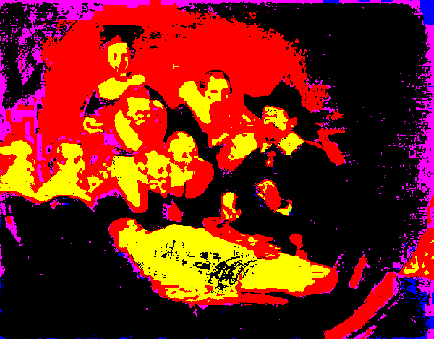 |
Rembrandt, color histogram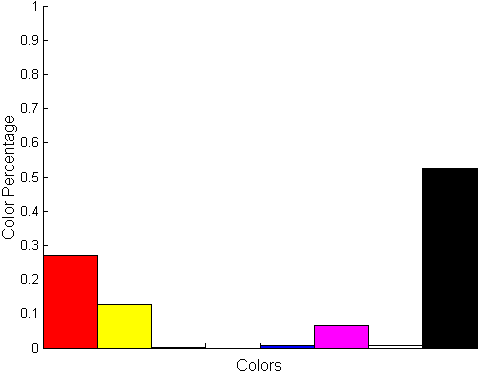 |
Eight color Monet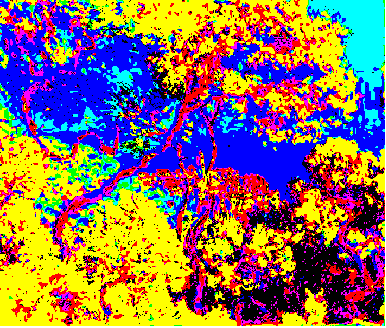 |
Monet, color histogram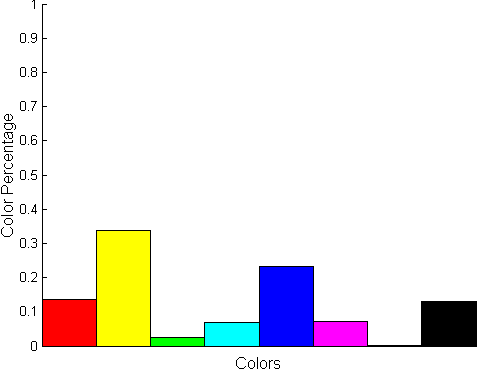 |
Eight color Picasso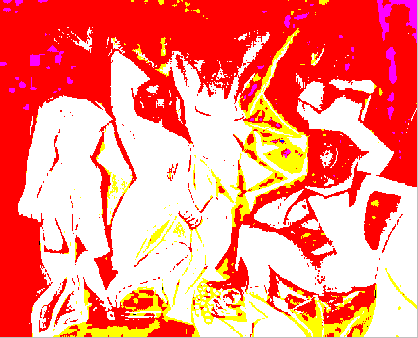 |
Picasso, color histogram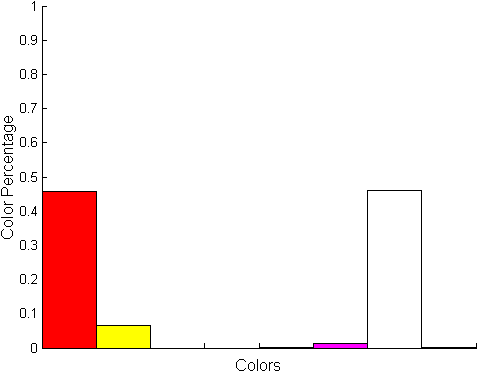 |
Overall Rembrandt tends to use much more black than the other two artist and Monet uses more yellow while Picasso uses more red. Based on these trends, 20 pictures from each artist were evaluated to try and determine who had painted a picture.
Detected
| Test Pic |
Monet |
Rembrandt |
Picasso |
%Correct |
| Monet |
15 |
0 |
5 |
75 |
| Rembrandt |
1 |
18 |
1 |
90 |
| Picasso |
6 |
1 |
13 |
65 |
This tool is fairly decent for picking out Rembrandt because of his heavy use of black. It's not nearly as accurate for Monet or Picasso, however, as these artists vary the colors they use more.
Blocks of Similar Color
This tool compares each pixel's color in a picture to the pixel's neighbors' colors. It creates a matrix of the average distance each pixel is away from its neighbors in the three dimensional RGB color space.

It then performs quad tree decomposition on this matrix, checking a region to see if the mean of the average color distances is below a certain threshold defined to be the maximum distance between similar colors, and then if the mean of the block being checked is above this threshold it is further divided into 4 equal blocks to see if these smaller blocks contain similar colors. The quad tree decomposition only goes to a level of six after which the number of blocks generated is totaled.
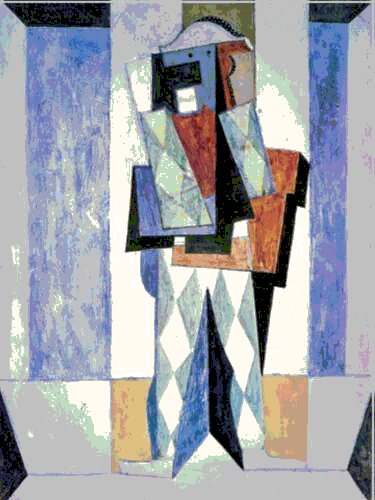
Original Picasso |
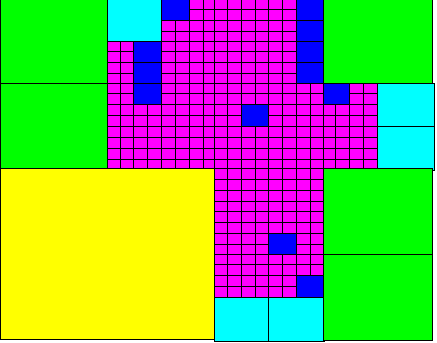
Picasso divided into blocks of similar color (343 blocks) |
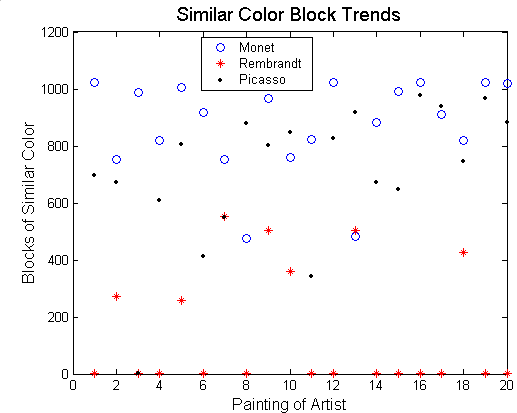
The general trend among the artists is that Rembrandt has a low number of blocks, Monet has a high number, and Picasso is all over the place although tends toward values in between that of the average block sizes of Monet and Rembrandt paintings. The low block count for Rembrandt is due to his use of large planes of similar dark colors. Although Monet has large blocks of colors that appear to blend into each other, Monet receives high block counts because usually these colors are actually made of pixels of vastly different colors right next to each other, such as blue and white for sky and water, which blend together for the human eye but not the computer screen. This way the high frequency of color change from pixel to pixel helps to distinguish Monet. Although this tool's data is inconclusive as to whether a painting is a Picasso or not, it can usually tell that a painting is either not a Rembrandt or not a Monet.
 Color Analysis MATLAB code Color Analysis MATLAB code 

|
|
|





